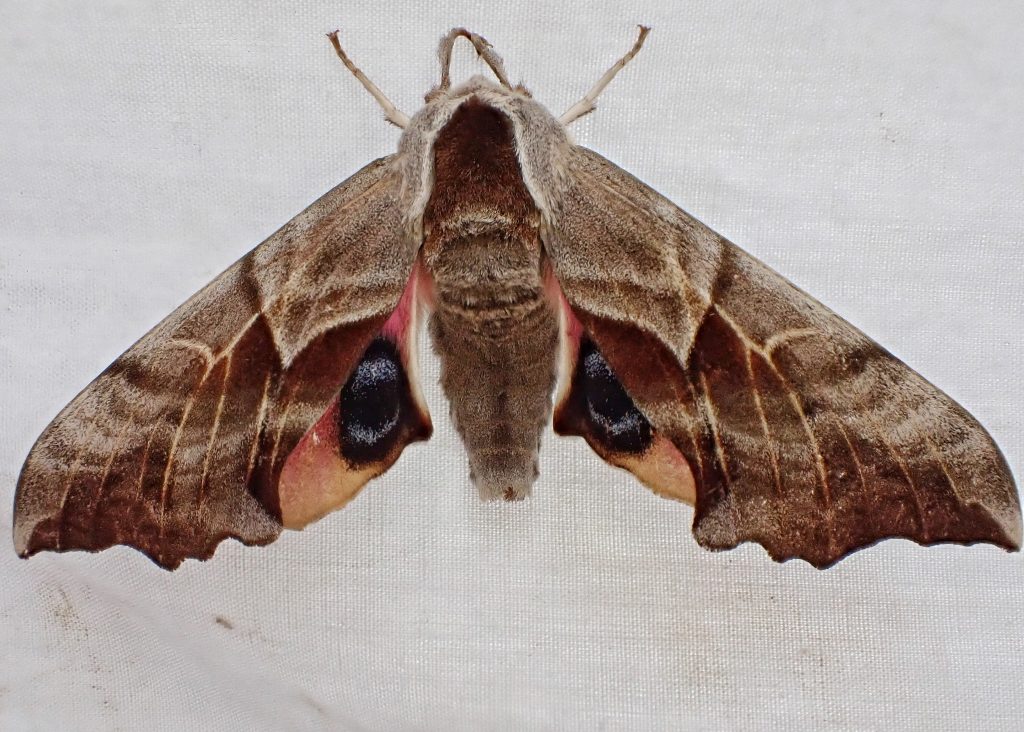
The first time I ever found this species I was hiking out to Warrior Rock Lighthouse on Sauvie Island, outside of Portland, Oregon, with my nbo, their partner, and their partner’s son, and I almost missed them! Or I should say I saw them out of the corner of my eye, but didn’t stop walking. But it kept niggling at my mind. It just seemed too symmetrical to be a dead leaf. Finally, after about 50 yds I about-faced and went back to look again. So glad I did, because what I found was a mating pair of Smerinthus opthalmica!
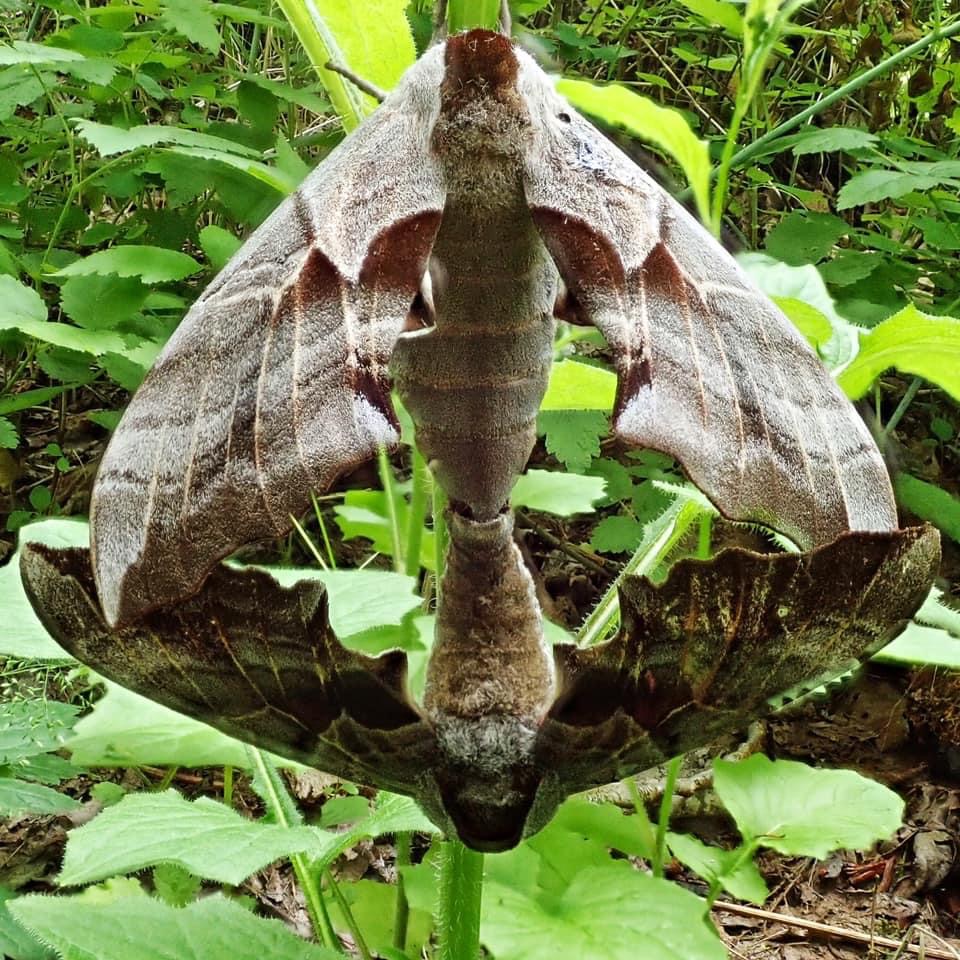
I was entranced by them just hanging there, motionless, creating the potential for more of these large and lovely creatures right before my eyes. Eventually I realized I was creating a traffic jam on the trail, and that my party was pressed up against the underbrush to give other folks room to walk, so I reluctantly abandoned those sphinx moths to their procreation. The whole rest of the walk I would periodically be struck by wonder at the idea that I had actually seen that wonderful sight. Though mating often lasts over 24 hours, I couldn’t find them on the way back, and assumed they had been disturbed by elements of the mass of humanity moving by them, since this was during the pandemic when sooo many people ‘discovered’ the great outdoors, but failed to read the etiquette manual.
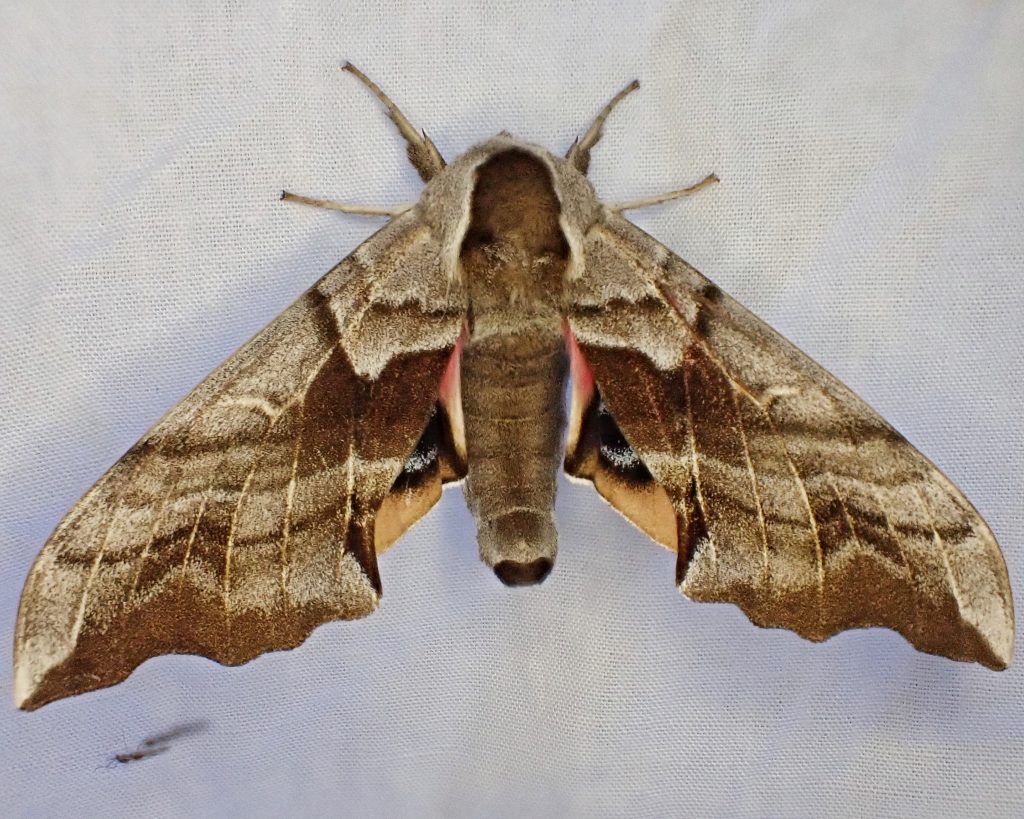
The majority of the moths shown here came from a trip to the Wind River in Skamania County, Washington, in late May. The large sphinx moths, as well as the large silk moths, tend to fly later at night, often after midnight, which is about when most other moths start packing it in, although whether that is because of the drop in temperature or exhaustion I do not know. So if I’m camping I always try to have a spare battery to cover the time after I turn in. And that night, when I arose at 4am to go fishing, I was rewarded with three S. opthalmica hanging out on my sheets. These moths are rather phlegmatic, even when not mating, and two of these three allowed me to pull back their forewing to expose the eyespot (the purpose of which is to startle a prospective predator), although if I wasn’t quick on the camera it just slid back to where it started. Needless to say I was so excited I took waaay too many photos, and didn’t make a cast until well after sunrise.
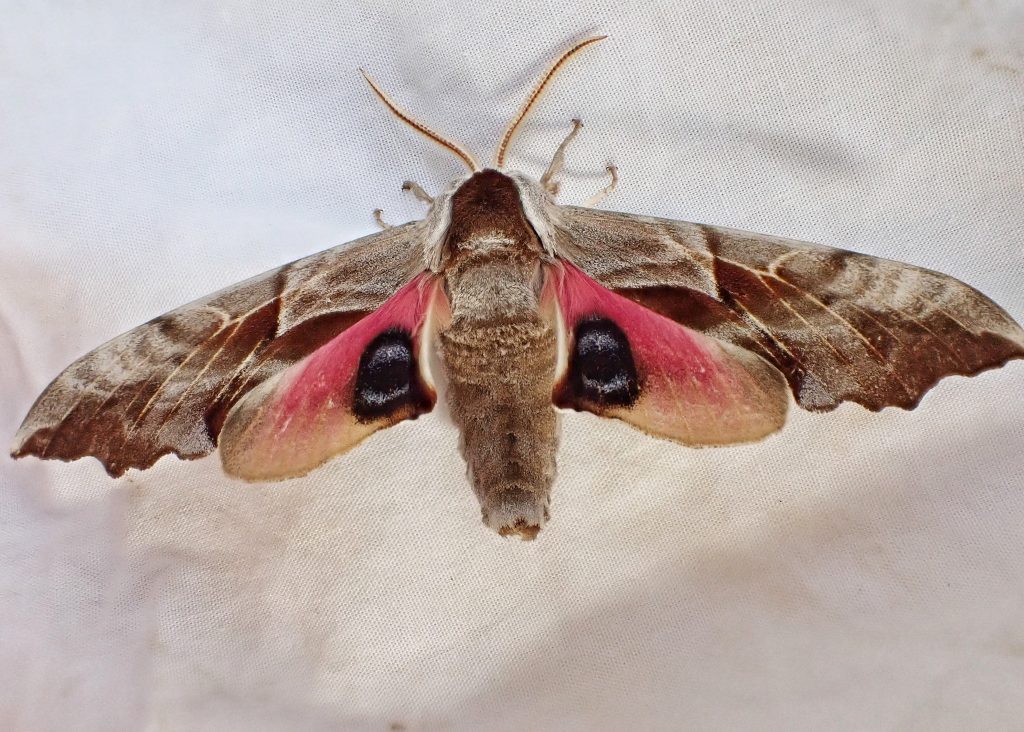
You sometimes see these moths called by the common name western one-eyed sphinx moth, but that doesn’t seem to be a fully acceptable name, possibly because it’s only been a dozen years since they were segregated from the trans-continental Smerinthus cerisyi (One-eyed Sphinx Moth) and raised to full species status. The two are almost identical, and variation for each falls within the limits of the other, except that some male S. opthalmica have a much browner forewing than any S. cerisyi, and S. cerisyi has a more roughly scalloped forewing margin.
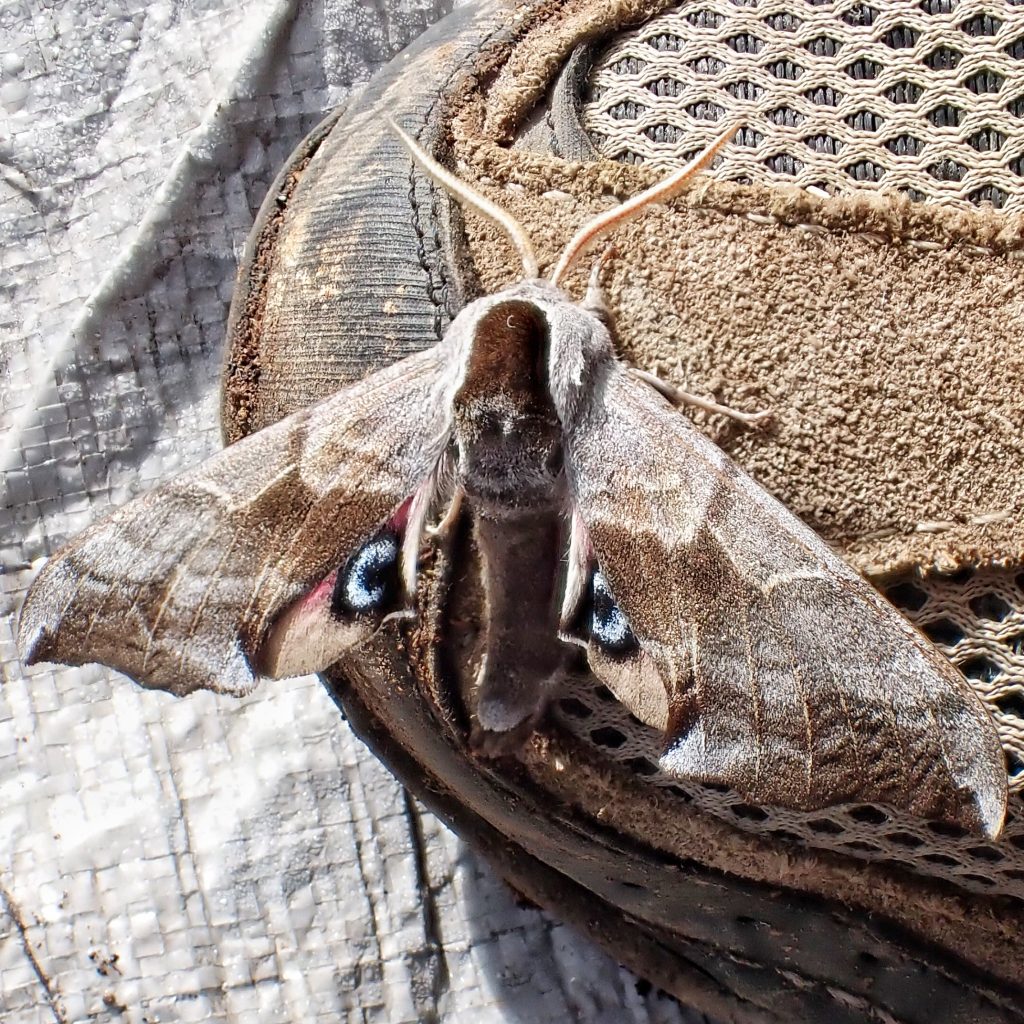
Description– Large (fw length 34-47mm) sphinx moth with a light greyish brown and dark brown forewing with a smoothly scalloped margin, and a pinkish hindwing with a blue eyespot with a black ‘pupil’; the thorax is grey on the sides and dark brown on top, and the body is brown, stout, and cigar shaped.
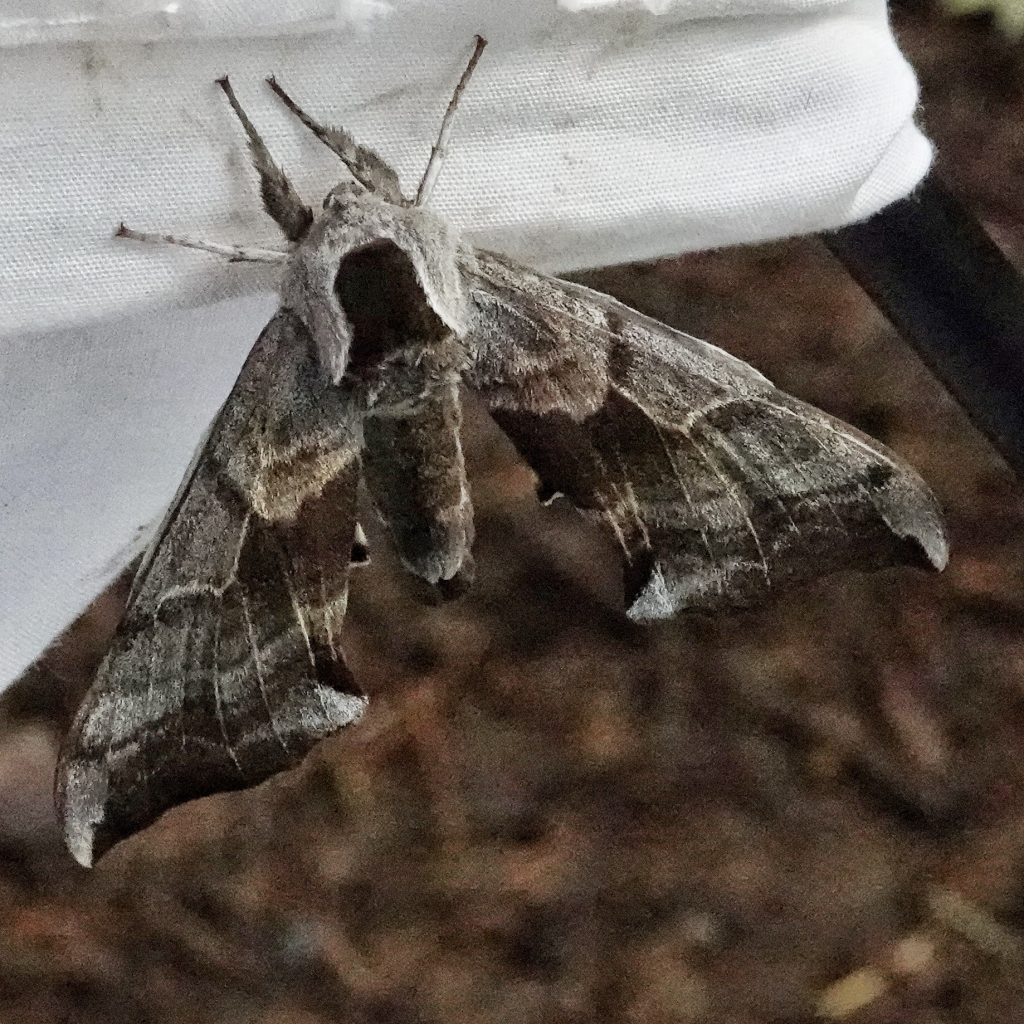
Similar species–Smerinthus cerysi is almost identical but is not known to fly south of central BC in our region; Smerinthus jamaicensis has the central ‘pupil’ of the eyespot bisected; Paonias spp. have a blue central ‘pupil’.
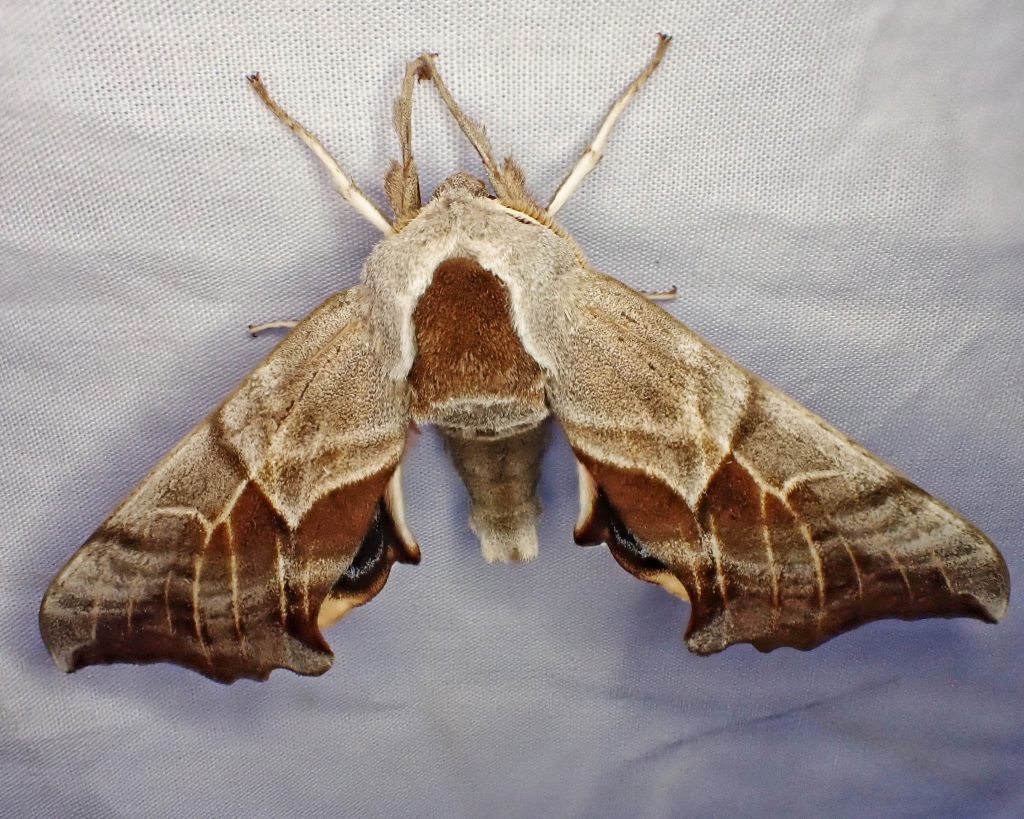
Habitat-Riparian and wetlands areas with willows or cottonwoods, and locations with quaking aspen.
Range-North America west of the Rockies and south of southern BC; region wide in appropriate habitat in the PNW.
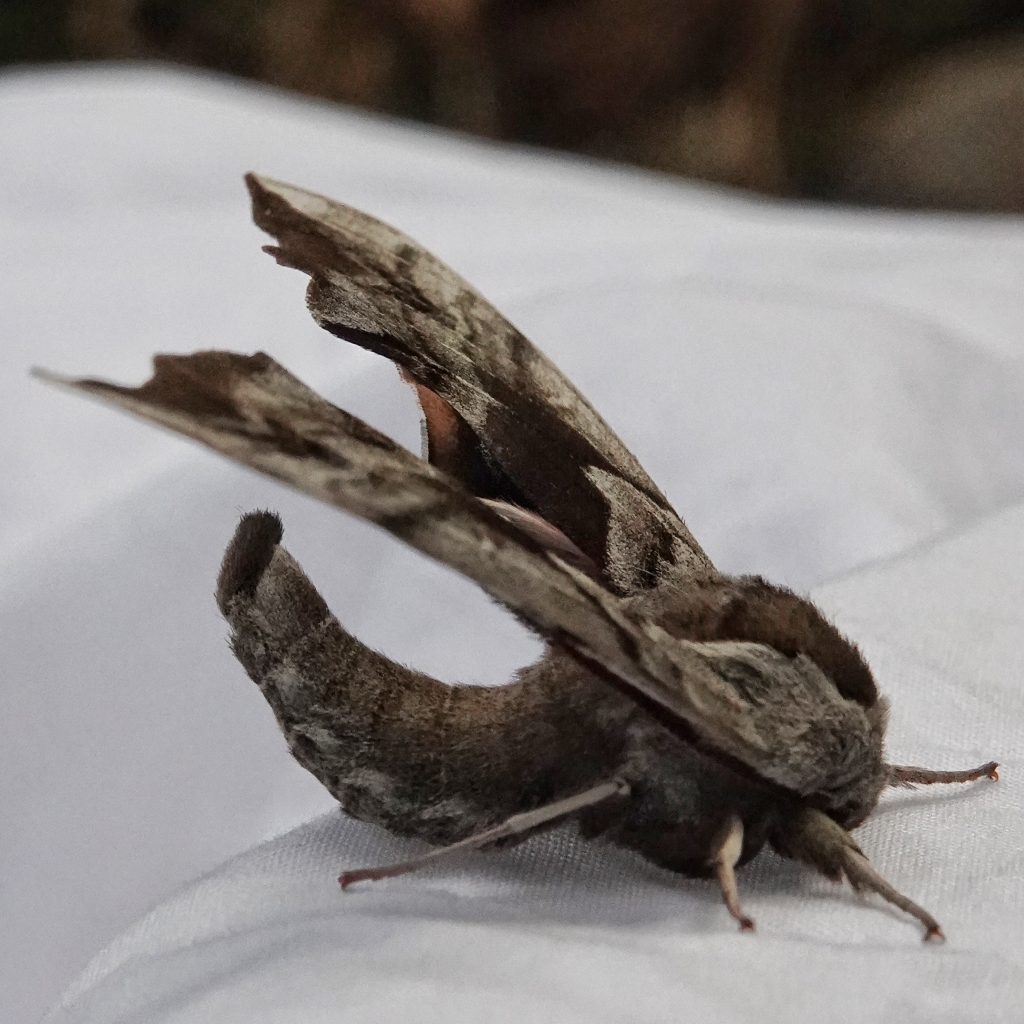
Eats-Larval hosts are members of Salicaceae, including willows, cottonwood, and aspen; adults have only vestigial mouthparts and do not feed.
Eaten by-Probably anything that can catch them.
Adults active-Late April to late August
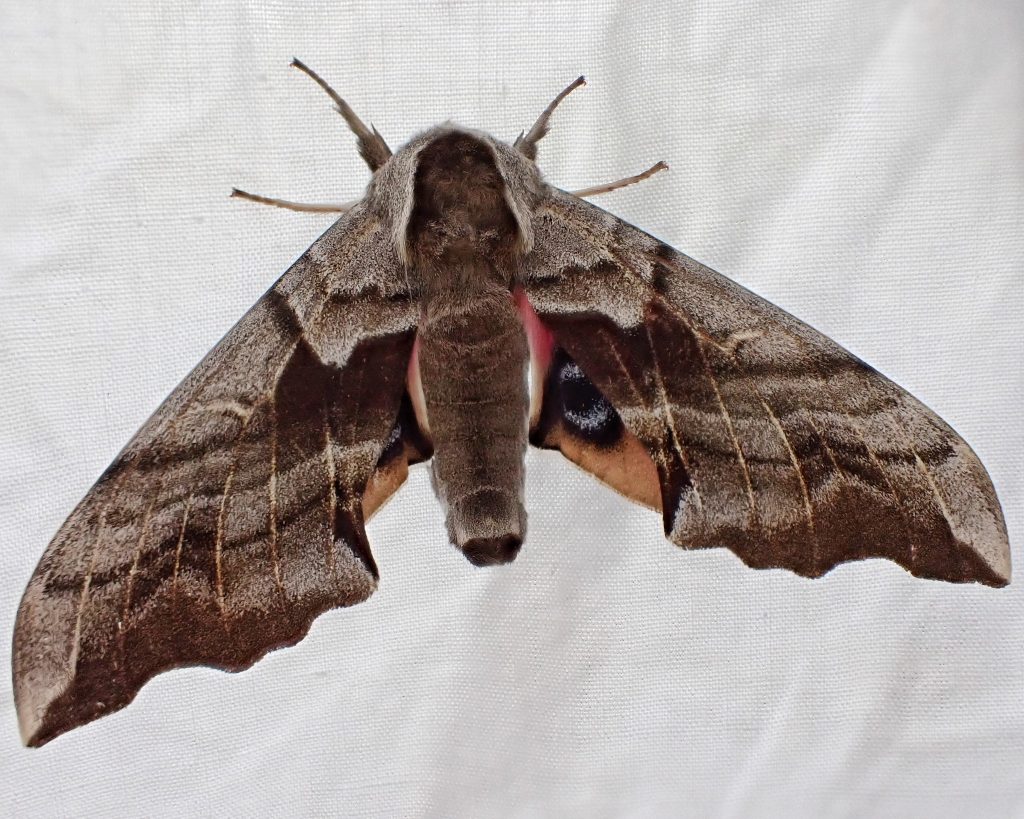
Life cycle-Univoltine; eggs laid singly on the larval host; caterpillars are solitary nighttime feeders who rest unsheltered during daylight; overwinters as pupae, and pupates in a shallow, underground chamber; females release pheromones shortly after eclosure, and may breed that same night.
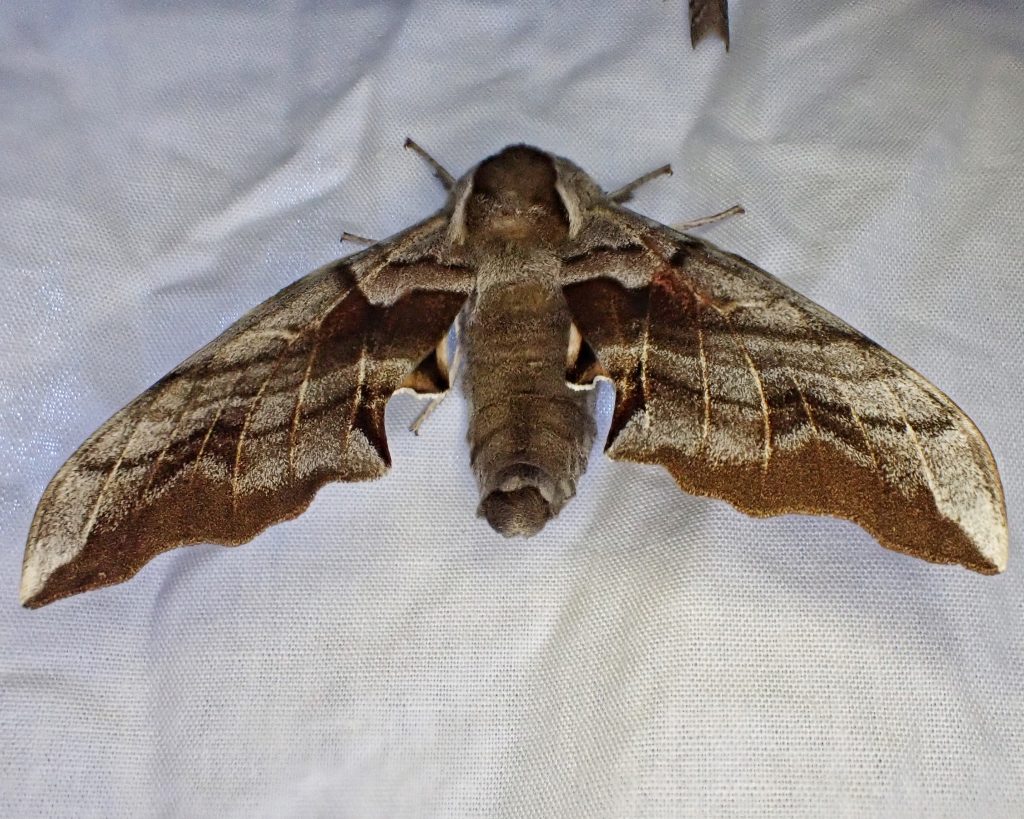
Etymology of names– Smerinthus is from the Greek word for a thread, and what it refers to is unknown, although A Maitland Emmet suggests that it may refer to the thread of life woven by the fates and cut by Atropos, since that is the theme of another Sphinx moth, Acherontia atropos. Spuler posits that it may refer to the thread-like, nonfunctional, proboscis. The specific epithet opthalmica is from the Greek word for ‘eye’, and refers to the eyespot on each hindwing.
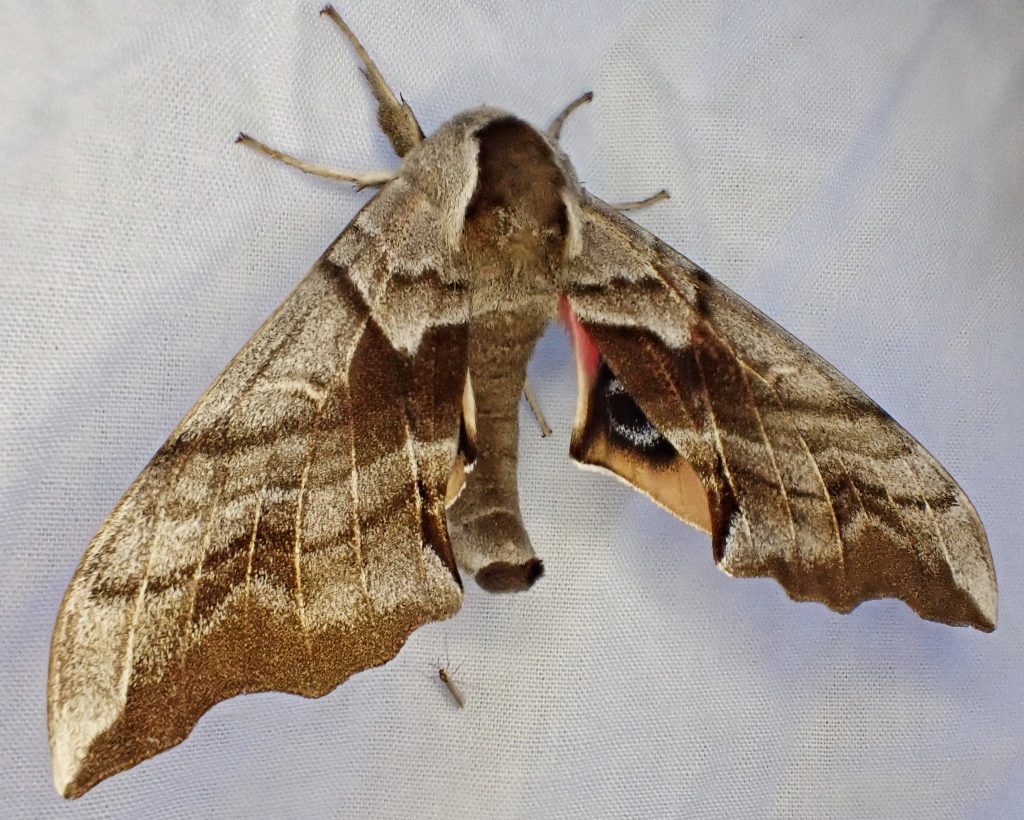
https://bugguide.net/node/view/1081561
http://mothphotographersgroup.msstate.edu/species.php?hodges=7822.1
https://www.butterfliesandmoths.org/species/smerinthus-ophthalmica
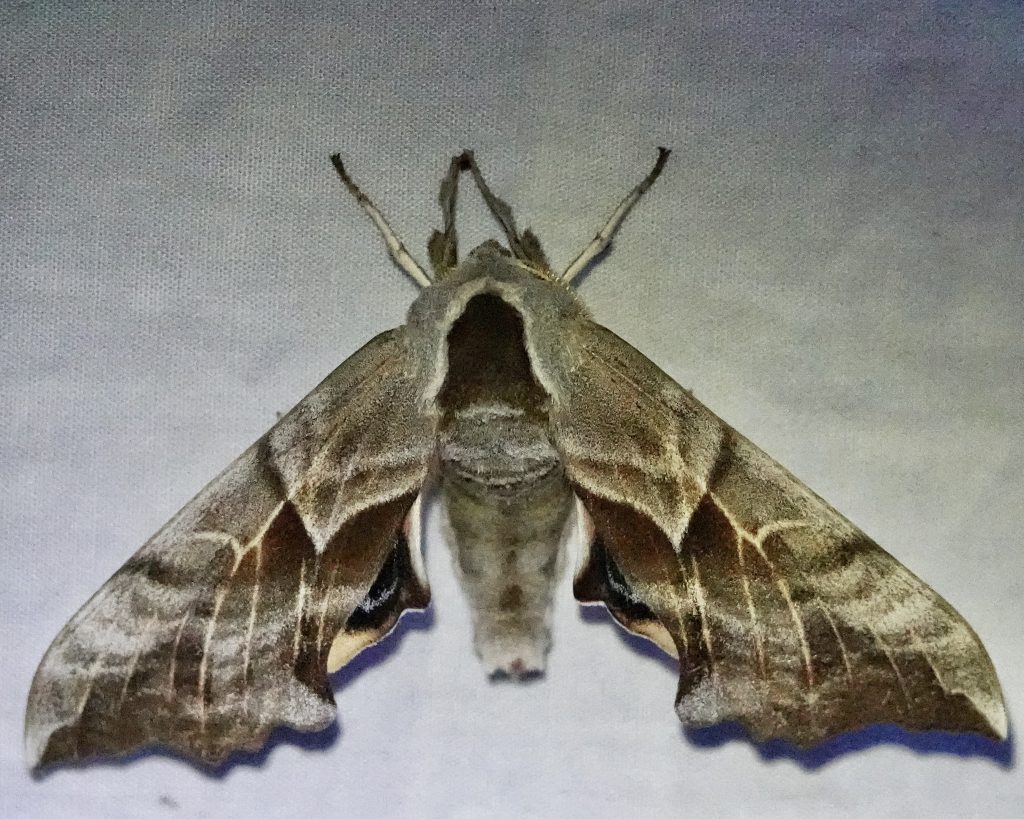
I got one she played an egg on my finger so I got her now and the egg put away what should be do
Well, if the egg hatches, then try putting it in a container with cottonwood leaves. I’ve never raised any caterpillars myself, but I’m sure a google search would talk about proper containers. Good luck!